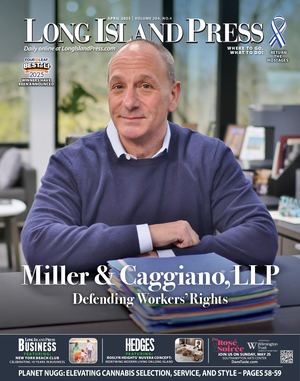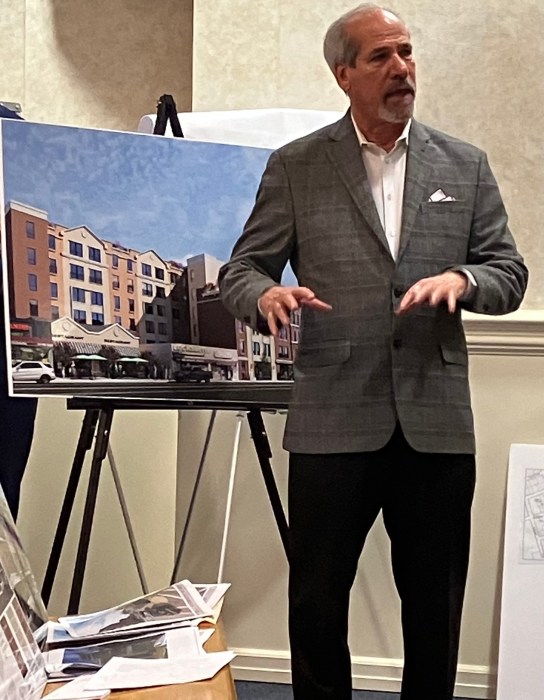“We have met the enemy and he is us” is a quote made famous in a 1971 Pogo cartoon penned by Walt Kelly describing the accumulation of garbage in a swamp.
That was also the message of a panel discussion on the region’s housing crisis hosted by the Real Estate Institute on Thursday, March 13. We agree with them.
Panelists attributed the unmet demand for more housing to onerous laws and lengthy approval processes for what they termed an “uninformed public” – a polite way of saying opposition of residents and public officials.
The housing shortage in Nassau County and across New York has caused home prices and rents to soar, driving many people out of the state. It has also hurt local businesses’ ability to attract new employees, homeowners who want to downsize but still live in Nassau, and young professionals who are discouraged from moving here.
Cara Longworth, regional director of Empire State Development who was a member of the panel, said that between 2009 and 2019, the Island lost 98,000 people between the ages of 35 and 55, the prime working age.
“That’s impacting our companies,” Longworth said. “In the last 20 years, we’ve created 62,000 more jobs than housing units.”
Developer Anthony Bartone, managing partner of Terwilliger & Bartone Properties, slammed legislative impediments like New York’s scaffold law, which he said raised insurance rates three times higher than anywhere else.
Builders, contractors, and New York affordable housing experts have frequently targeted the state’s nearly 170-year-old scaffolding law, which imposes absolute liability on contractors and property owners for falls from heights or being struck by falling objects.
New York is the only state with absolute liability.
Advocates say the law forces employers to prioritize safety measures, but opponents argue it leads to higher insurance costs, which in turn leads to higher construction costs.
Bartone also cited the one-month limit on apartment security deposits, prevailing wage mandates, and the proposed Good Cause Eviction law, which would add protections for tenants, including capping annual rent increases at 3%, as other obstacles to new housing.
“The challenges here are so deep it’s almost untenable,” said Bartone, who also serves as president of the Long Island Builders Institute. “You can’t come out with laws like these. I’m so tired of having unintended consequences.”
The panelists also addressed the lengthy review processes required by towns and villages on Long Island for residential and commercial construction in a business in which time is money.
Farmingdale Mayor Ralph Ekstrand, who earned many accolades in presiding over his village’s redevelopment, presented a solution to this problem.
Ekstrand said Farmingdale planned ahead and did the state-required environmental review for its master plan to determine what could be built and what couldn’t.
As a result, he said, “we can get a shovel in the ground in 120 days.”
Every municipality in Nassau ought to follow a similar review. The municipalities should also review their master plans to see how they can make them more attractive for home building.
David Pennetta, executive managing director of Cushman & Wakefield Long Island, addressed the challenge of improving master plans to make it easier for developers, particularly when proposing increased density in a community.
Pennetta said there was a need to educate elected officials, municipal appointees and the general public to advance housing developments.
“There’s an education problem, and before that there’s a human problem. Our elected officials don’t necessarily have any real estate experience,” Pannetta said.
“There’s a general feeling that developers are greedy,” he added. “They need to go out and explain the math to the community. We need to show why three units to an acre won’t pencil out. The math doesn’t lie.”
This is not going to be easy.
The housing shortage actually benefits people who already own homes here by helping increase the value of what might be their largest investment. This is a good thing unless a homeowner wants to downsize and stay in Nassau or have their grown children try to move nearby.
Mixed-use developments that include housing and retail also create jobs and generate tax revenue.
Gov. Kathy Hochul tried on two occasions to address the state’s shortage of 800,000 housing units.
Hochul initially proposed legislation requiring municipalities to allow homeowners to build an accessory dwelling unit, such as a modest apartment over a garage or a basement unit, on all owner-occupied residential zoned lots.
The governor later sought to have the state step into local zoning decisions if municipalities did not achieve a 3% increase in housing units over three years, primarily through transit-oriented developments.
Hochul backed off both times when Nassau County officials from both parties and some school officials vehemently criticized the plans, saying they would undermine the suburban dream. They said they were better positioned to oversee development in their communities.
She later responded with a carrot rather than stick approach, in which municipalities apply for a pro-housing community designation that makes them eligible for state economic development money under various programs.
This is a step in the right direction, but not enough.
The panelists in last week’s discussion showed the way forward. The question is whether it will be followed.




























